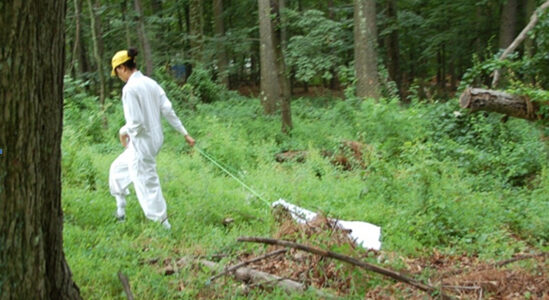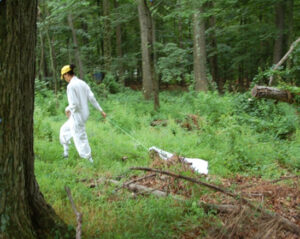Call for your appointment today 914-666-4665 | Mt. Kisco, New York

Ticks were collected in 2015 and 2016 by tick dragging at 5 sites in Suffolk County, New York (Southampton, Mannorville, Southold, Islip, and Huntington) and 3 sites in Connecticut (Mansfield in Tolland County and Stamford and Greenwich in Fairfield County).

“As expected, B. burgdorferi (Bb) was the most frequently detected agent in ticks from Suffolk County with 21% of nymphs and 67% of adult ticks infected,” says Tokarz from the Center for Infection and Immunity at Columbia University in New York City. [1] In Connecticut, the prevalence of B. burgdorferi was similar. Twenty-five percent of nymphs and 62% of adult ticks carried Bb.
The real surprise was the high prevalence of B. microti, the causative agent of babesiosis. B. microti was present in 17% of nymphs and 30% of adults in Suffolk County, which reported 197 babesiosis cases in 2014. The incidence of B. microti in Connecticut was lower but still noteworthy with 7% of nymphs and 14% of adults infected.
“Our finding of a high frequency of ticks infected with Babesia microti in Suffolk County, NY, implicates this agent as a probable frequent cause of non-Lyme tick-borne disease in this area,” explains Tokarz and colleagues.
[bctt tweet=”High incidence of pathogen causing Babesia in upstate NY region. #lyme #ticks” username=”DrDanielCameron”]
In contrast, the incidence of B. miyamotoi was much lower. Only 3% of both nymphs and adult ticks in Suffolk County were infected, while in Connecticut 3 adults were positive.
A. phagocytophilum was present in 7% of nymphs and 11% of adults in Suffolk County and 7% of nymphs and 8% of adults in Connecticut. The Powassan virus was detected in 2% of adults in Suffolk County and 1 adult tick in Connecticut.
Study identifies multiple infections in the same tick
The team of researchers also identified multiple infections in the same tick:
• 1 nymph and 7 adults (4%) were positive for A. phagocytophilum, B. burgdorferi, and B. microti in Suffolk County;
• 1 adult tick was positive for A. phagocytophilum, B. burgdorferi, and B. miyamotoi in Suffolk County;
• 1 tick was positive for 3 agents (B. burgdorferi, B. microti, and B. miyamotoi).
Multiplex real-time PCR assays can typically identify B. burgdorferi, B. microti, and A. phagocytophilum. They cannot, however, target B. miyamotoi or the Powassan virus – two agents rarely included in tick-borne pathogen surveillance studies, according to the authors. This limitation is significant given that the Powassan virus (POWV) can cause life-threatening encephalitis.
“To enable surveillance for all major I. scapularis-borne pathogens, we developed a multiplex one-step real-time reverse transcription-PCR (RT-PCR) assay that targets A. phagocytophilum, B. microti, B. miyamotoi, B. burgdorferi, and POWV,” explains Tokarz.
Having the ability to identify and monitor tick-borne pathogens is critical in developing effective diagnostic and treatment approaches. In a separate study, Curcio and colleagues found that 29% of Lyme disease patients also tested positive for antibodies to B. microti. “The importance of this finding is underscored by the fact that antibiotics against Lyme disease have no impact on the clinical course of babesiosis,” states Tokarz.
References:
- Tokarz R, Tagliafierro T, Cucura DM, Rochlin I, Sameroff S, Lipkin WI. Detection of Anaplasma phagocytophilum, Babesia microti, Borrelia burgdorferi, Borrelia miyamotoi, and Powassan Virus in Ticks by a Multiplex Real-Time Reverse Transcription-PCR Assay. mSphere. 2017;2(2).




Yale U had developed a potential treatment for babesia, but it needs to advance to human trials. Would you know the status of that effort? I called over there, but did not receive a call back.
I have not heard anything
High prevalence of babesia microti in Suffolk County, New York have been primarily reported during spring, summer and fall, when ticks are active.
The prevalence of Babesia Microti was highest in Myodes gapperi at 39%. Babesiosis is an emerging tick-borne zoonotic infectious disease.
I assume you are referring to a mouse study in Pennsylvania. “Higher Prevalence of Babesia microti than Borrelia burgdorferi in Small Mammal Species in Central Pennsylvania, United States” by Rocco and colleagues in Vector Borne Zoonotic Dis. 2020 Feb;20(2):151-154. https://pubmed.ncbi.nlm.nih.gov/31750805/